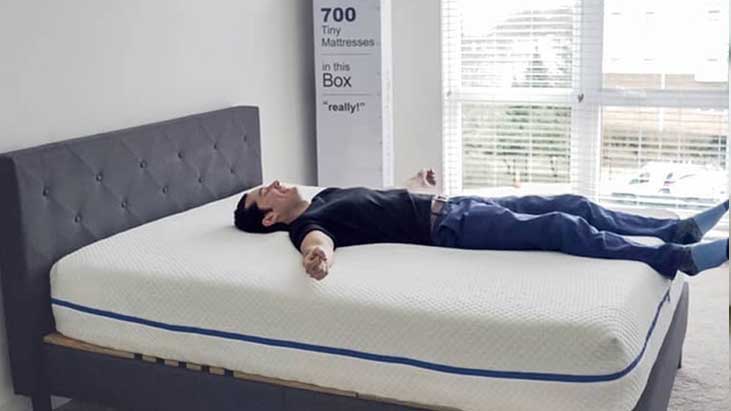Generally speaking, medical experts and retail professionals recommend replacing your mattress every seven to ten years. However, this doesn’t necessarily mean you need to buy a new one right away.
Whether it’s time for a new bed or not depends on various factors such as your sleep position, body weight and the quality of your mattress materials. Let’s talk about them.
Quality
When you look at the average lifespan of mattresses, they usually last around seven to ten years. These beds are a huge investment, so it’s important to take care of them. Using a mattress protector, rotating and flipping them regularly and following the manufacturer’s maintenance guidelines will aid in extending their life.
The quality of the original mattress will also play a role in how long it will last. A cheap, entry-level mattress will likely give out sooner than a high-end hybrid.
A natural latex mattress can last for 20 years or more, depending on the quality of its construction. Synthetic and blended latex mattresses tend to have a shorter lifespan. A clear sign that your mattress is ready for a replacement is when it starts to sag or if it produces painful pressure points. This is a result of the mattress being worn out and no longer providing adequate support. A comfortable bed is an essential part of a good night’s sleep, browse this site.
Materials

The materials used in mattresses play a major role in how long they last. Natural latex is resilient and highly durable, lasting for 15 to 25 years or more. Mattresses with natural materials tend to cost more, but offer more longevity than synthetic alternatives.
Wool is another traditional material, often used for top-side cushioning and fire resistance. Wool is soft and offers good insulation. Polyester is a popular synthetic fiber, used for its durability. Rayon is reconstituted wood pulp that’s been liquefied and extruded into filaments for fabric use.
Innerspring mattresses typically last for seven to 10 years, depending on the original quality and materials, along with the weight of those sleeping on it. Regularly flipping them helps distribute the wear, extending their lifespan. Signs that it’s time to upgrade your mattress include a noticeable sagging or lack of support, aches and pains in the morning, and an inability to find the right sleep position.
Sleeping Position
The way you sleep plays a significant role in how long your mattress lasts. Whether you are a side sleeper, back sleeper or stomach sleeper, each sleeping position puts pressure on different parts of the mattress and causes it to wear differently.
Your body weight also impacts the lifespan of your mattress. Heavier people may find their mattresses begin to sag prematurely and could require a more sturdy base layer.
The original quality of your mattress when you first purchased it can have an impact on how long it lasts as well. A cheap entry-level mattress will likely wear out quicker than a high-end hybrid model.
Frequency of Use
While some factors of mattress lifespan are outside a person’s control, there are many things they can do to help extend the life of their mattress. Proper maintenance includes regularly rotating and flipping mattresses, utilizing a mattress protector and following manufacturer care guidelines.
The type of mattress also has a significant impact on longevity. Mattresses made with natural materials, such as organic cotton and high-density memory foam, tend to last longer than mattresses with lower-quality materials.
Conlcusion:
Another key factor is how often the mattress is used. Mattresses that are used more frequently tend to degrade quicker than those that are only occasionally used. Mattresses slept on by multiple people, such as those used in guest bedrooms or shared by siblings or couples, can also degrade faster than those slept on by one person.
